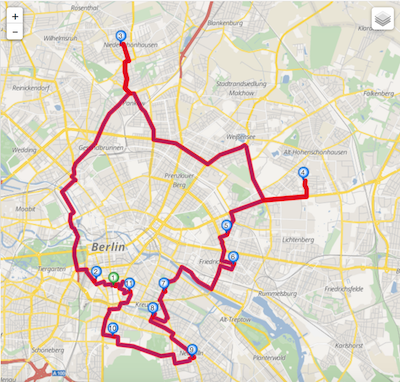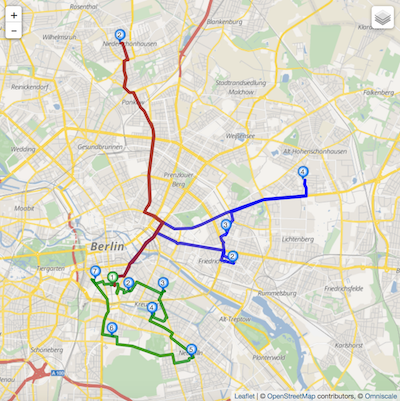We are happy to announce another objective function. It balances your routes’s completion times first, and, second, it balances activites over all available routes. To put it in other words, it minimizes the overall makespan of a vehicle route plan, and - given this makespan - it distributes activities equally over all available drivers. This usually results in a number of solutions with balanced activities. From this set of solutions, it chooses the solution that minimizes total transport costs.
It can be specified as follows:
"objectives": [
{
"type": "min-max",
"value": "completion_time"
},
{
"type":"min-max",
"value":"activities"
}
]


